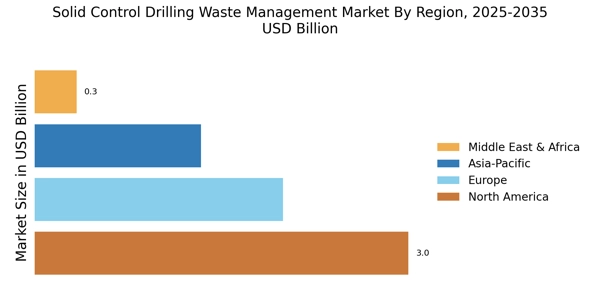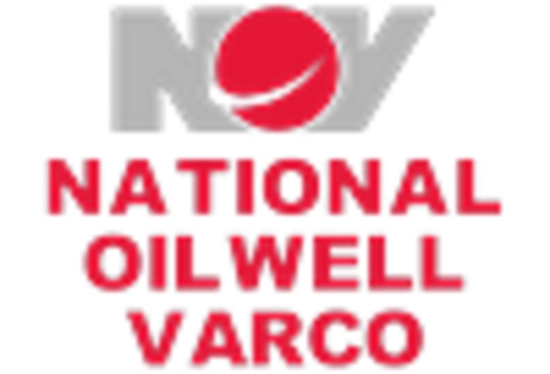Growing Environmental Awareness
The Solid Control Drilling Waste Management Market is significantly influenced by the rising environmental awareness among stakeholders. As public concern regarding environmental sustainability intensifies, drilling companies are increasingly adopting eco-friendly waste management practices. This shift is reflected in the growing demand for biodegradable drilling fluids and the implementation of waste recycling initiatives. Market data indicates that companies focusing on sustainable practices are likely to capture a larger market share, as consumers and investors favor environmentally responsible operations. The trend towards sustainability is expected to drive innovation in waste management technologies, leading to a more efficient and responsible approach to drilling waste.
Increasing Regulatory Pressures
Regulatory compliance is a critical driver in the Solid Control Drilling Waste Management Market. Governments and environmental agencies are imposing stricter regulations regarding waste disposal and environmental protection. These regulations mandate the proper management of drilling waste to minimize environmental impact, compelling companies to invest in advanced waste management solutions. The market is responding to these pressures, with an estimated increase in compliance-related expenditures by 7% annually. Companies that fail to adhere to these regulations may face substantial fines and reputational damage, thus incentivizing investment in effective solid control systems. As a result, the demand for innovative waste management technologies is expected to rise, further propelling market growth.
Economic Factors and Resource Recovery
Economic considerations play a pivotal role in shaping the Solid Control Drilling Waste Management Market. The rising costs of raw materials and the need for resource recovery are prompting companies to seek efficient waste management solutions. By effectively managing drilling waste, companies can recover valuable materials, such as barite and other additives, which can be reused in future drilling operations. This not only reduces operational costs but also contributes to a circular economy. Market analysts suggest that the potential for resource recovery could lead to a 10% reduction in overall drilling costs, making it a compelling driver for investment in solid control technologies. As economic pressures mount, the focus on waste management efficiency is likely to intensify.
Investment in Infrastructure Development
Investment in infrastructure development is emerging as a significant driver in the Solid Control Drilling Waste Management Market. As drilling activities expand into new regions, the need for robust waste management infrastructure becomes increasingly critical. This includes the establishment of treatment facilities and disposal sites that comply with environmental standards. The market is witnessing a surge in investments aimed at enhancing waste management capabilities, with projections indicating a potential increase of 15% in infrastructure spending over the next few years. Such investments not only facilitate compliance with regulations but also improve operational efficiency, thereby fostering growth in the solid control drilling waste management sector.
Technological Innovations in Waste Management
The Solid Control Drilling Waste Management Market is experiencing a surge in technological innovations that enhance waste processing efficiency. Advanced separation technologies, such as centrifuges and shale shakers, are being integrated into drilling operations, allowing for the effective removal of solids from drilling fluids. This not only reduces waste volume but also recycles valuable resources, thereby optimizing operational costs. The market is projected to grow at a compound annual growth rate (CAGR) of approximately 5.2% over the next five years, driven by these technological advancements. Furthermore, the adoption of automated systems and real-time monitoring tools is likely to improve decision-making processes, ensuring compliance with environmental regulations while maximizing resource recovery.


















Leave a Comment